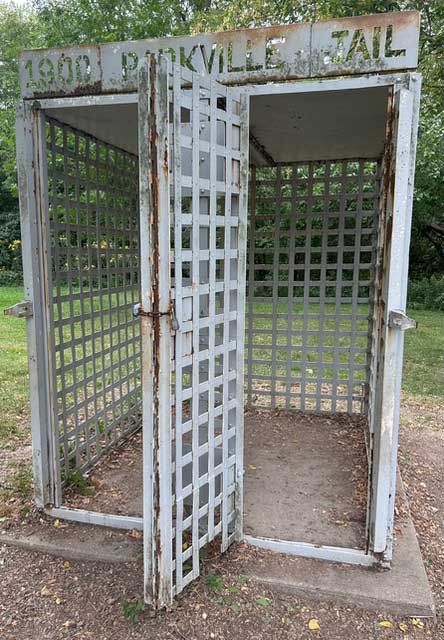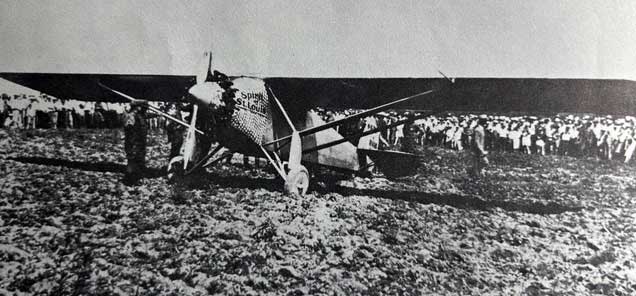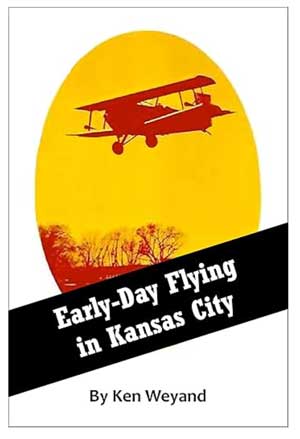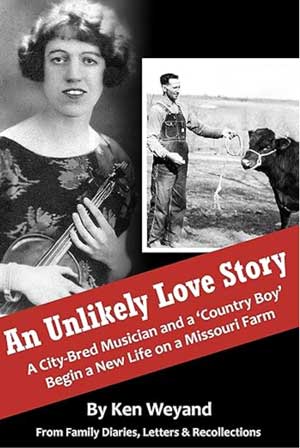Remembering Thanksgivings with Lucy
November 2025
Vintage Discoveries
Remembering Thanksgivings with Lucy
by Ken Weyand
My earliest memories of Thanksgiving go back to the 1940s, when my parents and I often spent the day with my step-grandmother Lucy and my Aunt Ruth at their home in Hamilton, IL, about 40 miles from our farm in Missouri.
Lucy, who became a step-mother to my dad and his seven siblings in 1897 when their mother died, and anchored the family when their father died two years later, had turned 80 by the time I was born. She was “hard-of-hearing,” as they said in those days, and I was instructed to “speak up” when addressing her.
In one of our conversations, she told me that her parents had taken her to a Lincoln-Douglas debate in Quincy, Illinois when she was a “babe in arms.” While she had no personal memory of the event, the historic connection we made with Lincoln made a lasting impression.
Although the family had a few homemade recipes for grape and dandelion wine, Lucy considered herself a teetotaler. But one of my uncles gave her a bottle of French brandy each year on her birthday, and my aunt noted it had been consumed when Lucy’s next birthday rolled around. It apparently did her little harm, as she lived to be 98.
Each Thanksgiving, Lucy and my aunt often invited members of Lucy’s family, and occasionally my dad’s oldest sibling, my Aunt Florence, also would join us. There was a neighbor who occasionally joined us, a Mr. Fenton, who worked for the railroad and once gave me a ride on a switch engine – a real adventure.
Aunt Ruth, who had lived for a short time in France, took pride in her cooking, and the meal was always a great occasion. She also had a large garden, fertilized with compost from her kitchen. She also canned the surplus, and had well-stocked jars on shelves in the basement.
After the main meal, which left everyone stuffed, we all made room for ice cream, which my aunt frequently topped off with Crème de Menthe liqueur – making it a unique sundae, and another “exception” to the family’s teetotalling nature.

The family in Hamilton, circa 1943. My parents are standing, flanked by Ruth on the left and Florence (the oldest sibling) on the right. I’m standing in the foreground, with Lucy on the left and Carrie, my mom’s mother, on the right. (Photos from Weyand collection)

Lucy Weyand in 1944
Later, the family would relax in the living room. In those “dark ages” before TV and its offerings of NFL football, we would resort to family conversations. As the “old folks” visited, I would peruse my aunt’s collection of Life magazines, and a few old toys that she reserved for my visits. At some point, our after-dinner entertainment involved card-playing, and I recall that Canasta was one of the favorites.
Lucy was also famous for her love of watermelon. I recall more than one summer visit when she remained at the table, finishing a large portion after the rest of the family had finished their meal.
One summer in the 1940s I spent a week with Grandmother Weyand and Aunt Ruth, bringing my bike to explore the paved streets of Hamilton – a major improvement from the dirt roads near our Missouri farm. I remember that my aunt made me a breakfast treat she had enjoyed in France: a soft-boiled egg served in an egg-cup. Cracking the shell at its top, she would add a dollop of butter and a bit of salt and pepper. There was even a special downsized “egg spoon” for the occasion.
Ken Weyand is the original owner/publisher of Discover Vintage America, founded in July 1973 under the name of Discover North.
Ken Weyand can be contacted at kweyand1@kc.rr.com Ken is self-publishing a series of non-fiction E-books. Go to www.smashwords.com and enter Ken Weyand in the search box.












